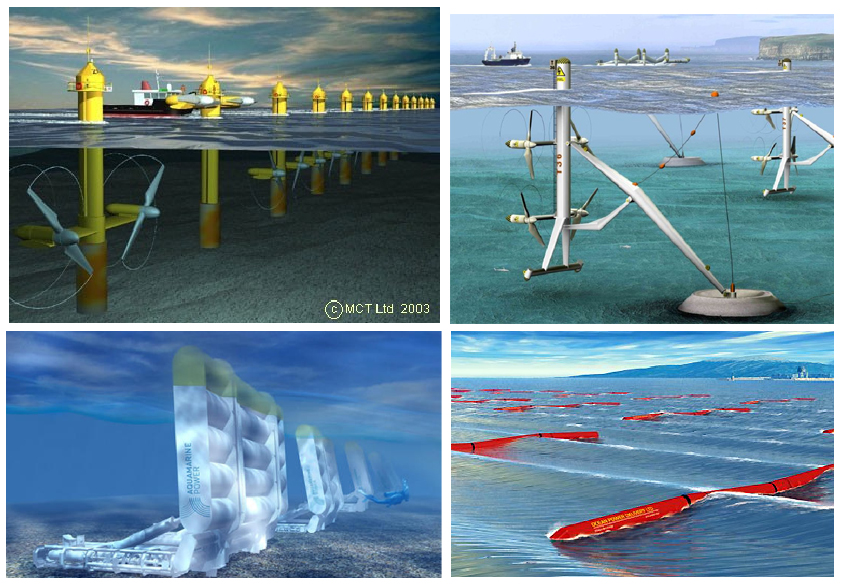Marine Energy: Is it the future?
Blogger: Forest & Bird’s Marine Advocate, Kirstie Knowles.
As a small piece of rock that is surrounded by a giant, frothy, swirling mass of ocean, we’re in a unique position to harness our marine energy.

Some of the tidal and wave technologies used to harness the power of our currents.
Some of the tidal and wave technologies used to harness the power of our currents. And already, scientists, bureaucrats and technologists alike are waxing lyrical about our marine potential.
To quote principal NIWA scientist Dr Craig Stevens, in the latest Solar Action Bulletin:
Over the next decade we should expect to see a number of first generation tidal farms appear in tidal channels. These will be comparable with some of the larger wind farms now installed. By the end of the decade there will be a number of small wave farms along with some of the first deepwater tidal devices suitable for working in places like Cook Strait”.
There are already 26 wave and tidal energy projects at various stages of development in New Zealand.
Four are well developed:
- Crest Energy Kaipara Limited (with support from Todd Energy) – They plan to install about 200 underwater turbines each of 1MW near the mouth of the Kaipara harbour. It has received interim support for its resource consent applications from the Environment Council pending further information before a decision is made. The project was awarded $1.85 million in the first round of the government’s Marine Energy Development Fund in 2008.
- Wave Energy Technology – They have launched a small scale prototype in Lyttelton Harbour but aims to produce a 100KW ocean-scale device somewhere in NZ. This project was awarded $760,000 from the government’s Marine Energy Development Fund in 2009.
- Energy Pacifica – A NZ-UK consortium that plans to install 20 underwater turbines, each of 1.2MW in the outer reaches of Tory Channel in the Marlborough Sounds, where the Cook Strait ferries enter the Sounds.
- Neptune Power – One of the first companies off the block, they received resource consent in 2008 for a mid-water tidal turbine device in Cook Strait. A prototype is currently in place off Wellington’s South Coast. Their end goal is to develop a 900MW commercial project.Over the past few years, small scale trials of these nascent technologies have been launched around the world – however no hard and fast conclusions can be drawn about its environmental effects.
While some are seeing marine energy as a panacea for our energy troubles, it has lifted the eyebrows of some environmentalists who’ve questioned the impacts on the sea-bed and marine migratory species such as whales.
In New Zealand, alarm bells have been particularly raised by the Kaipara proposal, which is home to a number of threatened species and vulnerable habitats.
Most worrying is the potential impact on critically endangered Maui’s dolphins, which number less than 111. The proposal may also interfere with the harbour’s important juvenile snapper and shark nursery areas, its sea-grass beds and its mollusc and wading bird populations.
The proposal may also interfere with the harbour’s important juvenile snapper and shark nursery areas, its seagrass beds and its mollusc and wading bird populations.
To install these almighty turbines will require immense drilling, and once they’re up they may churn up the sea in a way that effects light penetration and ultimately the sea-forests ( phytoplankton and sea grass) that support so many marine animals.
Light pollution, noise pollution, electro-magnetic disturbance, sedimentation, oil discharges – there’s a number of potential impacts that we need to be cautious about before we fully endorse these new green technologies.
Forest & Bird are already liaising with the industry and in the future we’ll keep people abreast of the potential risks that these proposals pose to our marine life.
Obviously decommissioning Stockton coal station and relying on the green technologies is our ultimate goal but we need to ensure we get the right mix of renewable energy that has the least impact on the wild life and wild places.
